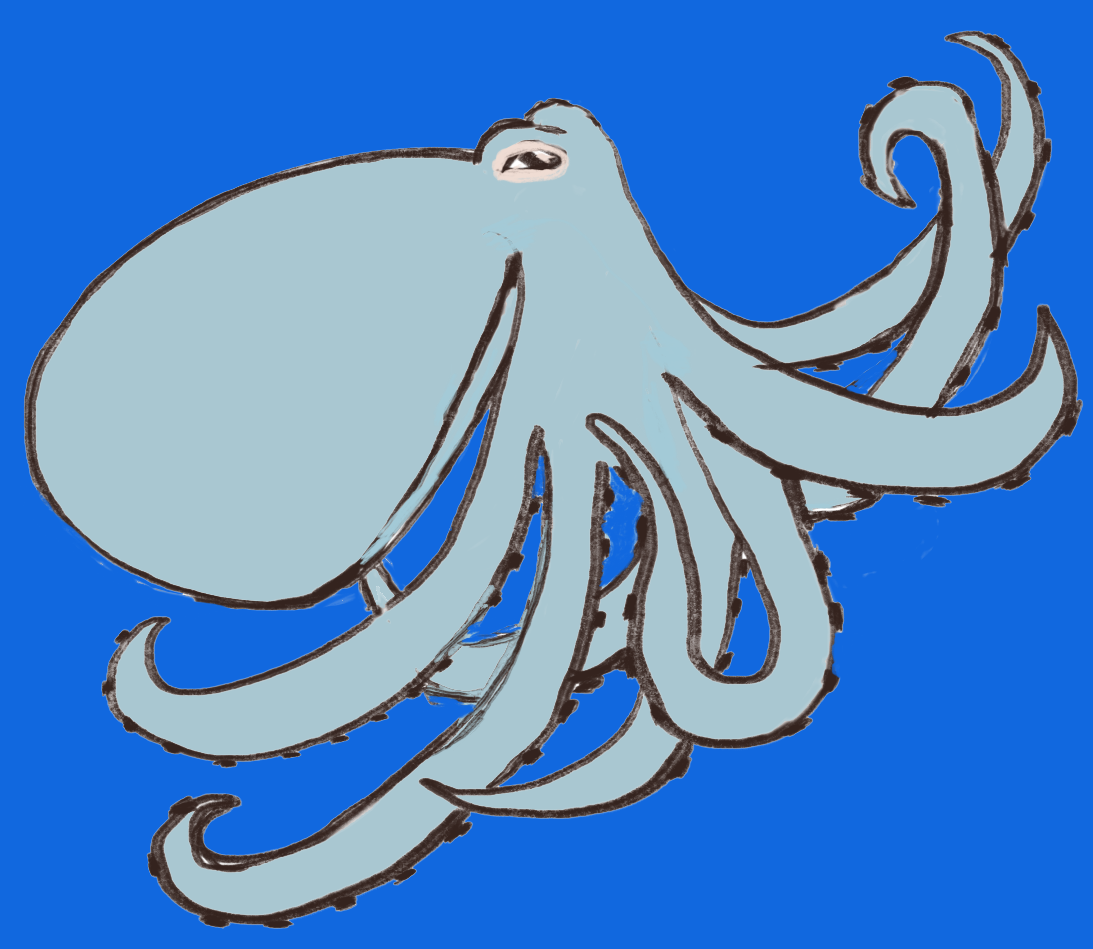

The film explains that octopuses will change color to blend in with their surroundings and they may also use color as a form of communication. Octopuses typically live in dens, small holes or rocky crevices, in the ocean. They have three hearts, blue blood and nine brains! They have a central brain in their head and a large ganglion (or “mini-brain”) in each of their arms, which are able to sense, touch and taste independently of their central brain and other arms.
What amazes me the most is that octopuses can recognize different people. The film tells a story about a researcher who kept an octopus at home in a tank. When the researcher came home from work, the octopus would swim to the top of the tank and raise one of its arms out of the water to touch the researcher in greeting. She would not do this with visiting family members or friends. Another story is about a lab assistant that would poke and prod an octopus in its laboratory tank. When that particular lab assistant would approach the tank, the octopus would squirt her with water!
After watching the film, I turn to go back to see the octopus again, but the line is even longer now. It is time to move on to the next exhibit.